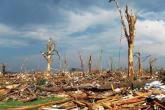Case Reports
Recurrent Multidrug Resistant Urinary Tract Infections in Geriatric Patients
Four case studies are presented, which suggest the safety and efficacy of methenamine hippurate to treat complicated urinary tract infections in...
Scheduling dialysis before a major storm can lower the odds of hospitalization or death in the month after the storm, according to a study by HHS. Early dialysis was associated with a 20% lower risk of an emergency department visit and 21% lower risk of hospitalization in the week of the storm, as well as 28% lower risk of death 30 days after the storm.
Related: Recurrent Multridrug Resistant Urinary Tract Infections in Geriatric Patients
Researchers from the HHS Office of the Assistant Secretary for Preparedness and Response (ASPR) used data on 13,836 patients who received dialysis in New Jersey and New York City, the areas hardest hit by Hurricane Sandy in 2012. Before the hurricane made landfall, 60% of patients with end-stage renal disease received early treatment in 70% of the facilities in the storm area.
Related: Disaster Preparedness for Veterans With Dementia and Their Caregivers
The study is part of the ASPR’s broader effort to better protect at-risk populations, such as children and “medically vulnerable” residents, during disasters. The authors of the study recommend that dialysis facilities conduct disaster drills to test emergency and communications plans and assess the staff’s ability to coordinate early dialysis. Drills also help determine whether patients are prepared for their part in disaster-ready treatment by knowing how, where, and when to get their early and emergency care.
Four case studies are presented, which suggest the safety and efficacy of methenamine hippurate to treat complicated urinary tract infections in...

Community-based outpatient clinics can play an important role in disaster response, but significant barriers exist, which must be addressed.
Natural disasters, such as Hurricane Katrina in 2005 and more recently Hurricane Sandy in 2012, underscore the need for disaster preparedness in...
